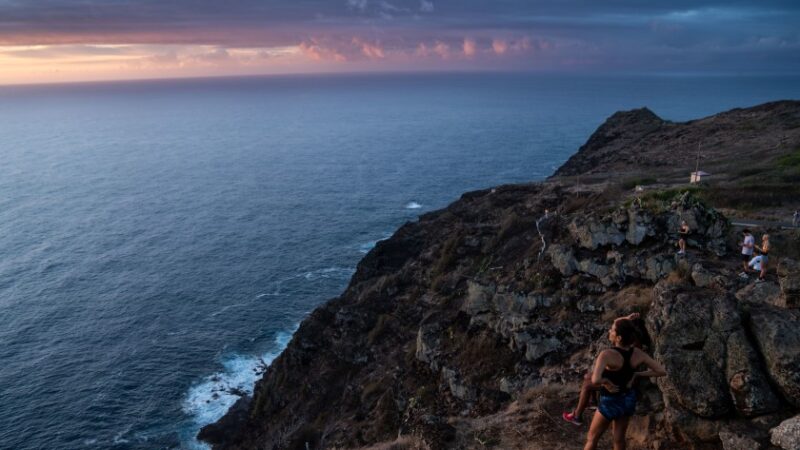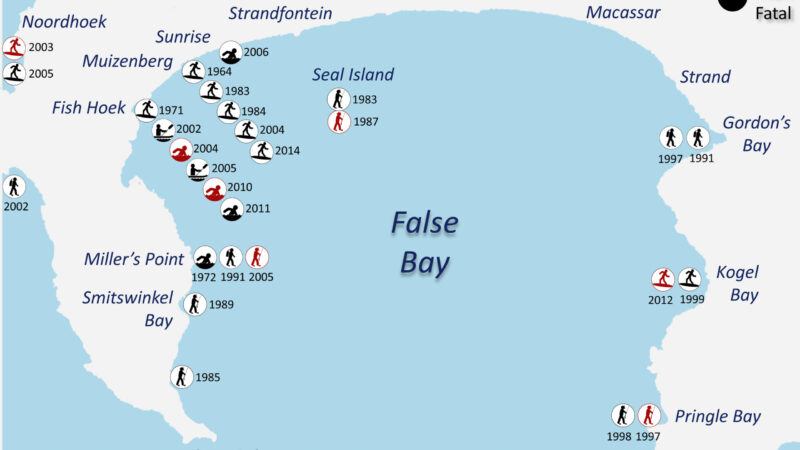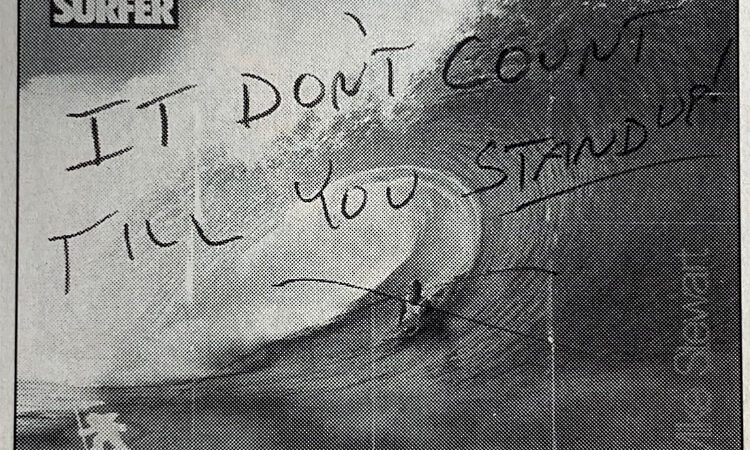Tom Morey leaned over to introduce himself to the two-year-old girl, Daisy Jane, while sitting in the shade at a popular beach just south of the San Clemente Pier.
“I am the boogie man,” Morey said quietly, looking into her eyes, a smile cracking the edge of his lips.
Morey needed no introduction to anyone else gathered Saturday, Aug. 10, at T-Street Beach, where about 100 bodyboarders came together for the simple purpose of celebrating the sport while enjoying the surf.
If it wasn’t for Morey’s creation — the Boogie Board — nearly 50 years ago, those at the informal beach party and millions of others around the world may never have known the thrill of catching a wave.
Sign up for our Coast Lines newsletter, a weekly digest of news and features on how the residents of the SoCal coast are building ties to their changing environment. Subscribe here.
Tom Morey grew up in Laguna Beach and by the ’50s was a hot-dogging nose rider who had owned a surf shop in Ventura and held the first professional, paid surf contest. He later moved to Hawaii to enjoy the more tropical surf life with his wife, Marchia.
It was while living in Hawaii, Morey, then 37, decided to cut a big piece of foam in half, sealing it with an iron and a copy of the July 7, 1971, Honolulu Advertiser — the print from the newspaper transferring to the board.
Marchia Morey remembers the moment she saw her husband walk out to the surf break in front of their home that day.
“What are you doing? It’s just a piece of foam,” she recalled saying to her husband, laughing at the memory. “You’re going out with that?”
She watched from shore as Tom rode wave after wave, finally coming to shore and urging her to give it a try.
With a big belly — at eight months pregnant with their son Sol — Marchia would become the first person besides Tom to give this new invention a try.
“I’m looking at the waves – what have I put myself into?” she remembers thinking. “I’m just going to put this soft thing on my belly — when it comes, it took me right to shore. I went, wow, that was fun.”
Growing this new type of wave-riding business — the boards much smaller and more flexible than traditional surfers were used to — wasn’t easy. A friend loaned Morey $200, and after he was able to raise about $1,000, he came back to the mainland to start the business.
At first, he called his board SNAKE – an acronym for Side, Naval, Arm, Knee and Elbow. But he quickly learned the name made people wary. So he renamed it Boogie Board after his love for blues music.
He put an ad in a mail order catalog and priced the board at $37, to match his age. He got three orders when the first ad went out.
Tony Prince, taking photos of the bodyboarders who were gathered at T-Street, was one of the early riders who picked up Boogie Boarding in the mid-’70s. A friend told him the waves at T-street would be the perfect place to ride.
Price and other Boogie Boarders started showing up regularly, making it the hub of the South Orange County scene. They’d enter contests, then travel around with the Morey Boogie Board team to promote the invention in beach towns around the country.
One of those beach towns was Ocean City, Md., where Jay Reale was spending a summer with his family in 1979.
“I dropped everything else I was interested in,” Reale said. “Bodyboarding took precedent over everything. Really, I was just completely immersed in the sport and started competing right away.”
The pro bodyboarding circuit peaked in the late-’80s and early-’90s, with even a pro circuit in Southern California. “It hasn’t regained the glory it enjoyed at that time,” Reale said.
But Reale, along with wife and fellow bodyboarder Vicki, hope to help the sport regain popularity.
The duo, who were the hosts of Saturday’s gathering, launched San Clemente-based ebodyboarding.com to help enthusiasts find the best boards and fins to suit their style of riding. It’s also an online hub that helps fellow bodyboarders stay connected.
Morey sold the rights to Morey Boogie Board company to investors in the late-’70s. Though he isn’t involved in the product currently, those who know the history of the sport know the important role he played.
“It’s awesome to bring him down here and let all these people give their appreciation to him for his contribution to wave riding,” Reale said. “All these people, we’ve all dedicated so much of our lives to the sport. Here’s the guy who was responsible for bringing this sport to all of us.”
Bodyboarding is different than traditional surfing in that it’s an easy, inexpensive way to ride waves – which is why it caught on with the masses.
“Anyone can hop on a bodyboard and ride a wave, first crack, unlike surfing which takes more time and skill,” Reale said. “And Tom, he’s responsible for that. He saw that vision early on. … It just opened up wave riding to a plethora of people who otherwise would have never had a chance to do it.”
At the bodyboard gathering, people waited patiently to take photos or share stories with Morey, who sat in the shade with the simple word “SURF” on his blue hat.
“Thanks for coming down here, it must be exhausting because everyone wants to talk to you,” Regina Monetti, a U.S. bodyboarding champion in the mid-’80s and mother of two-year-old Daisy Jane, said to Morey.
People always ask Morey the same question: Did he ever think it would become as big as it has?
And his response is always the same: a shake of the head and the answer, “No.”
“I can’t believe the number of people coming, with the number of boards,” said Morey, who on Thursday, Aug. 15, will celebrate his 84th birthday. “Nothing has caught on like this, that I know of.
“It brings me joy.”
























Recent Comments